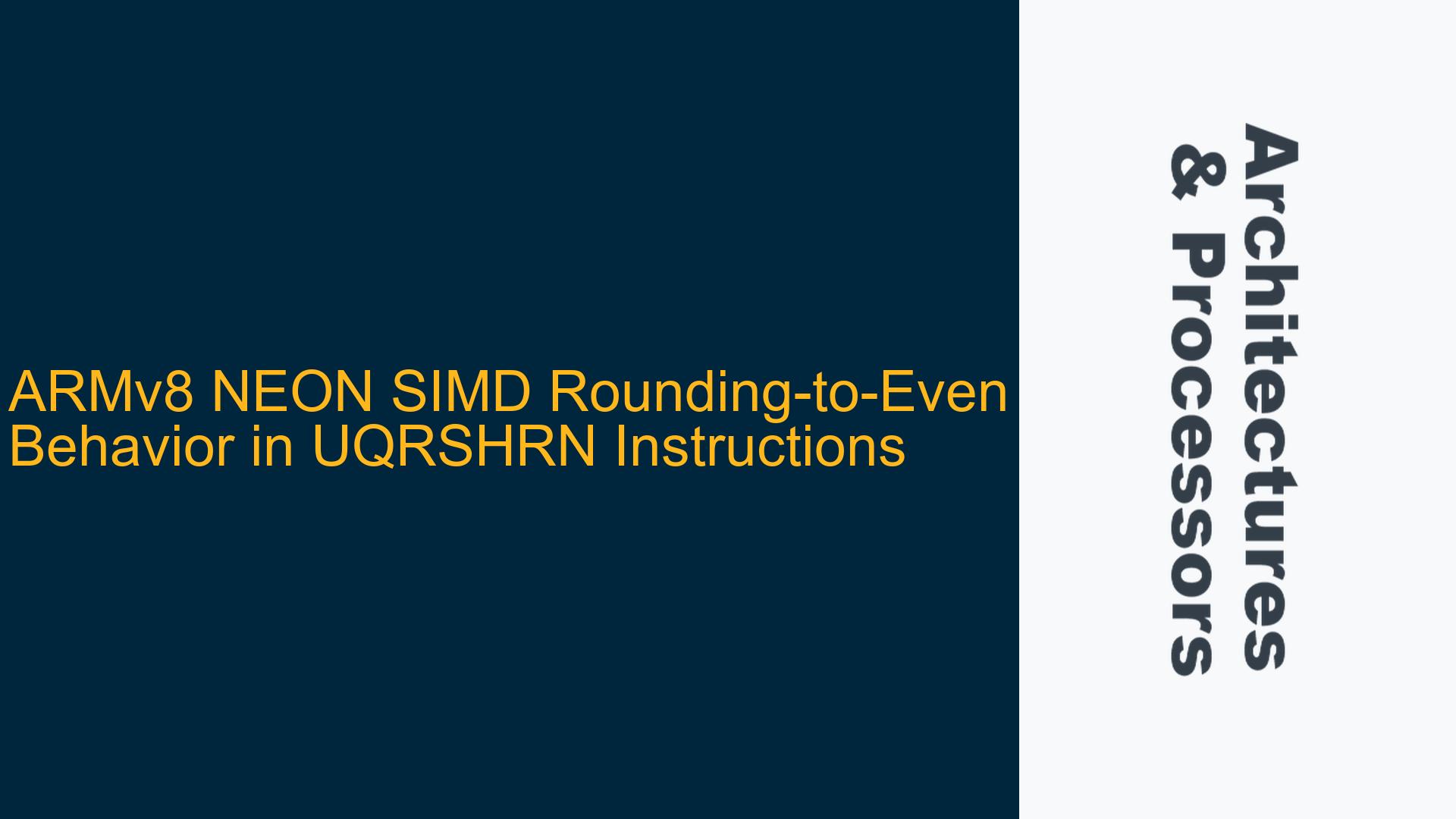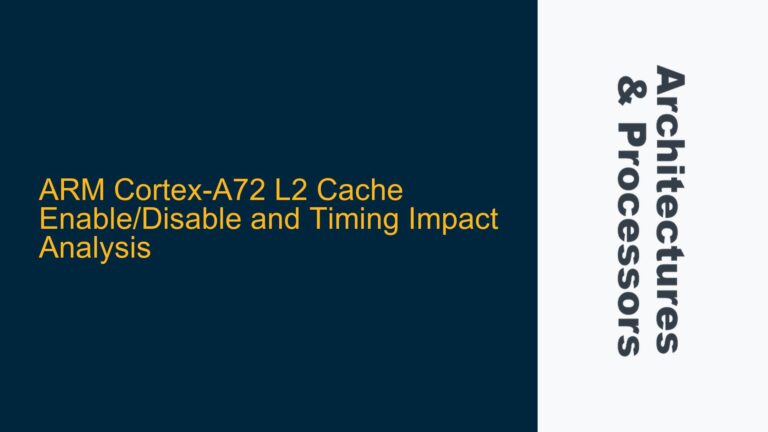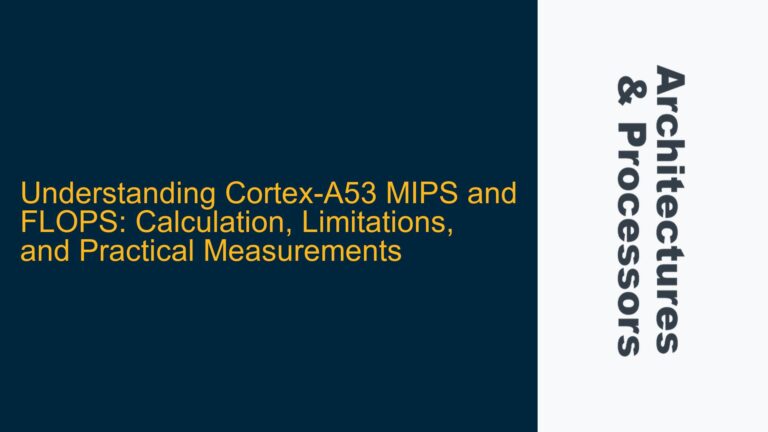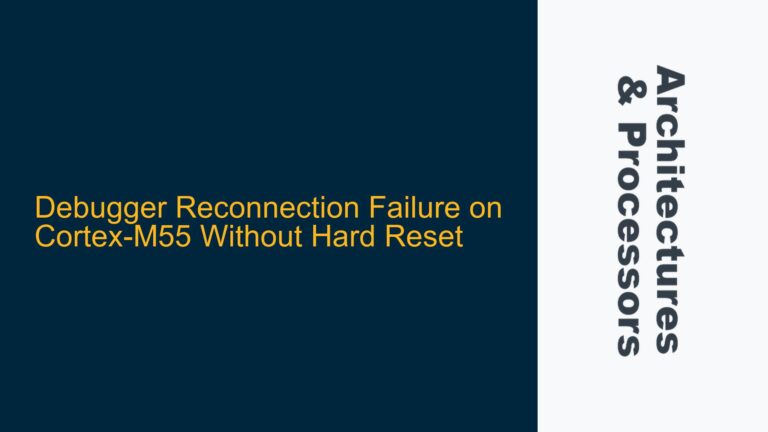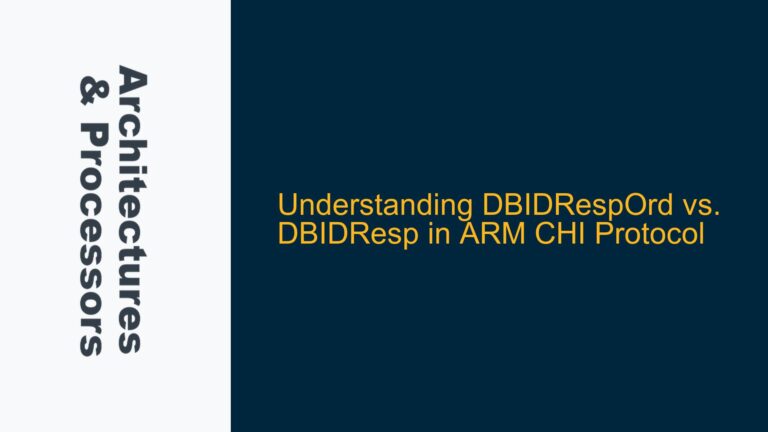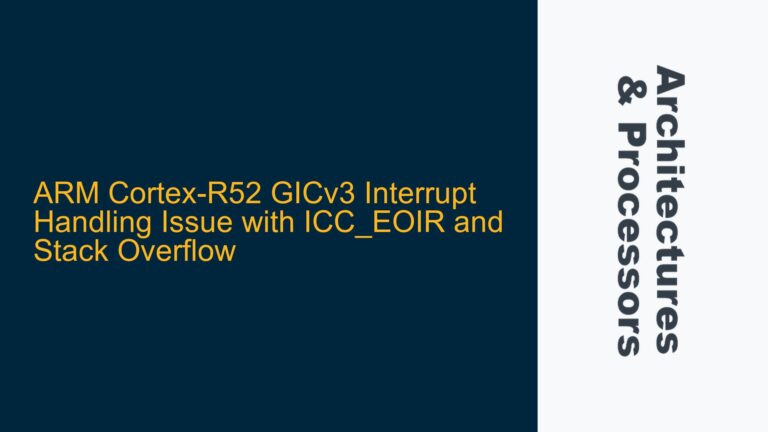ARMv8 NEON SIMD UQRSHRN Rounding-to-Nearest Behavior and Limitations
The ARMv8 NEON SIMD instruction set includes the UQRSHRN (Unsigned Saturating Rounded Shift Right Narrow) and its variant vqrshrn_n_u16, which are designed to perform bit-shifting operations with rounding. These instructions are particularly useful in scenarios where data precision needs to be reduced while maintaining as much accuracy as possible. The UQRSHRN instruction shifts the input value right by a specified number of bits, saturates the result to the destination width, and rounds the result to the nearest integer. However, the rounding behavior of UQRSHRN is fixed to "round to nearest with ties rounding away from zero." This means that when the fractional part of the value is exactly 0.5, the instruction will round the value to the nearest integer in the direction away from zero.
The fixed rounding behavior of UQRSHRN can be problematic in applications where a different rounding mode is required. Specifically, in some numerical algorithms and signal processing applications, it is desirable to use "round to nearest even" (also known as "bankers’ rounding") when ties occur at 0.5. This rounding mode ensures that half-way values are rounded to the nearest even number, which helps to reduce bias in rounding errors over multiple operations. The inability to control the rounding mode in UQRSHRN can lead to discrepancies when porting code from other architectures, such as x86, where rounding-to-even behavior is often the default or can be explicitly specified.
The UQRSHRN instruction operates on vectors of unsigned integers, and the rounding behavior is applied to each element independently. The instruction is part of the ARMv8 NEON SIMD (Single Instruction, Multiple Data) extension, which is designed to accelerate data-parallel computations. The NEON SIMD engine is widely used in multimedia, image processing, and machine learning applications, where operations on large datasets need to be performed efficiently. The fixed rounding behavior of UQRSHRN can be a limitation in these domains, especially when the results need to match those produced by other architectures or when specific rounding modes are mandated by standards or algorithms.
Rounding Mode Mismatch Between ARMv8 NEON and x86 Architectures
The core issue arises from the mismatch in rounding behavior between the ARMv8 NEON SIMD UQRSHRN instruction and the rounding behavior typically expected on x86 platforms. On x86, the default rounding mode for many floating-point and integer operations is "round to nearest even," which is also the behavior required by the IEEE 754 standard for floating-point arithmetic. This rounding mode is particularly important in financial and scientific computations, where minimizing rounding bias is critical. The inability to replicate this behavior directly using UQRSHRN on ARMv8 NEON can lead to inconsistencies when porting code or algorithms between the two architectures.
The UQRSHRN instruction’s rounding behavior is hardcoded in the hardware and cannot be modified through software configuration. This is a common design choice in SIMD instruction sets, where the focus is on maximizing throughput and minimizing latency by simplifying the control logic. However, this design choice can be a limitation in scenarios where specific rounding modes are required. The ARMv8 architecture does provide other instructions and mechanisms for controlling rounding behavior in floating-point operations, but these are not directly applicable to integer operations performed by NEON SIMD instructions.
The rounding mode mismatch can be particularly problematic in applications that require bit-exact results across different platforms. For example, in image and video processing, small differences in rounding behavior can accumulate over multiple operations, leading to visible artifacts or deviations from expected results. Similarly, in machine learning, rounding errors can affect the accuracy of models, especially in low-precision inference scenarios. The lack of control over rounding behavior in UQRSHRN can therefore be a significant obstacle in achieving cross-platform compatibility and accuracy.
Implementing Round-to-Nearest-Even Using ARMv8 NEON SIMD Instructions
To achieve round-to-nearest-even behavior using ARMv8 NEON SIMD instructions, a custom implementation is required. This involves using a combination of NEON instructions to emulate the desired rounding behavior. The key steps in this process are:
-
Detecting Ties at 0.5: The first step is to identify values that are exactly halfway between two integers. This can be done by examining the fractional part of the value after shifting. For example, if the value is being shifted right by N bits, the fractional part can be obtained by masking the lower N bits of the original value. If the fractional part is exactly 0.5 (i.e., the value of the N-th bit is 1 and all lower bits are 0), then the value is a tie.
-
Rounding to Nearest Even: Once ties are detected, the next step is to round them to the nearest even number. This can be achieved by checking the least significant bit (LSB) of the integer part of the value. If the LSB is 1, the value is odd and should be rounded up. If the LSB is 0, the value is even and should be rounded down. This logic can be implemented using a combination of NEON comparison, bitwise, and arithmetic instructions.
-
Combining Results: Finally, the results of the rounding logic need to be combined with the results of the standard UQRSHRN instruction. This can be done using NEON conditional select instructions, which allow for the selection of values based on a condition mask. The condition mask is generated based on the tie detection logic, and the appropriate rounding result is selected for each element in the vector.
The following table summarizes the NEON instructions that can be used to implement each step of the round-to-nearest-even logic:
| Step | Operation | NEON Instructions |
|---|---|---|
| 1 | Detect Ties at 0.5 | AND, CMP, MOV |
| 2 | Round to Nearest Even | ADD, AND, ORR |
| 3 | Combine Results | BIT, BSL, SEL |
By carefully combining these instructions, it is possible to emulate the round-to-nearest-even behavior on ARMv8 NEON SIMD. However, this approach requires additional instructions and may introduce some overhead compared to the native UQRSHRN instruction. The exact performance impact will depend on the specific use case and the efficiency of the implementation.
In conclusion, while the ARMv8 NEON SIMD UQRSHRN instruction does not natively support round-to-nearest-even behavior, it is possible to achieve this using a custom implementation. This approach involves detecting ties at 0.5, rounding to the nearest even number, and combining the results using NEON instructions. Although this method introduces some additional complexity and potential performance overhead, it provides a viable solution for applications that require consistent rounding behavior across different platforms.
